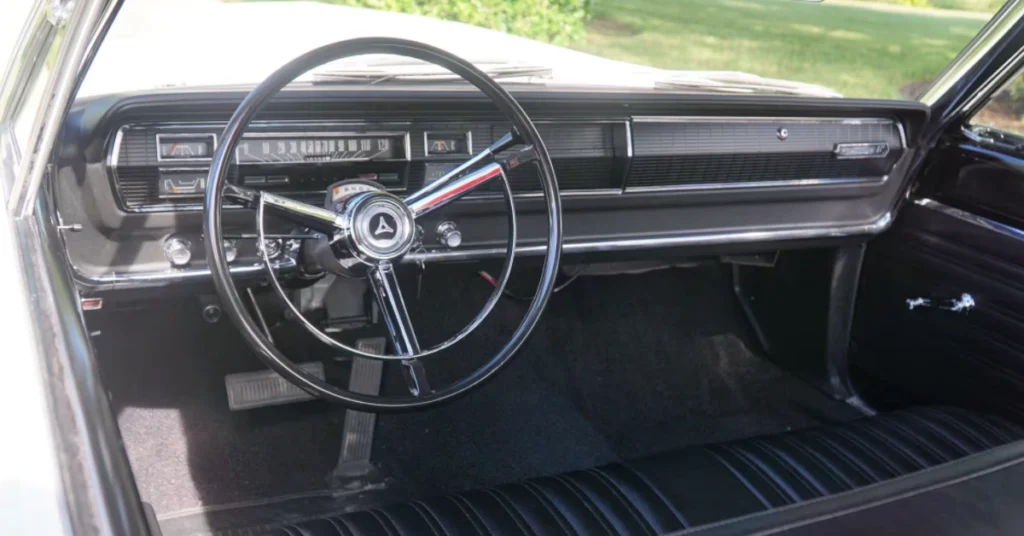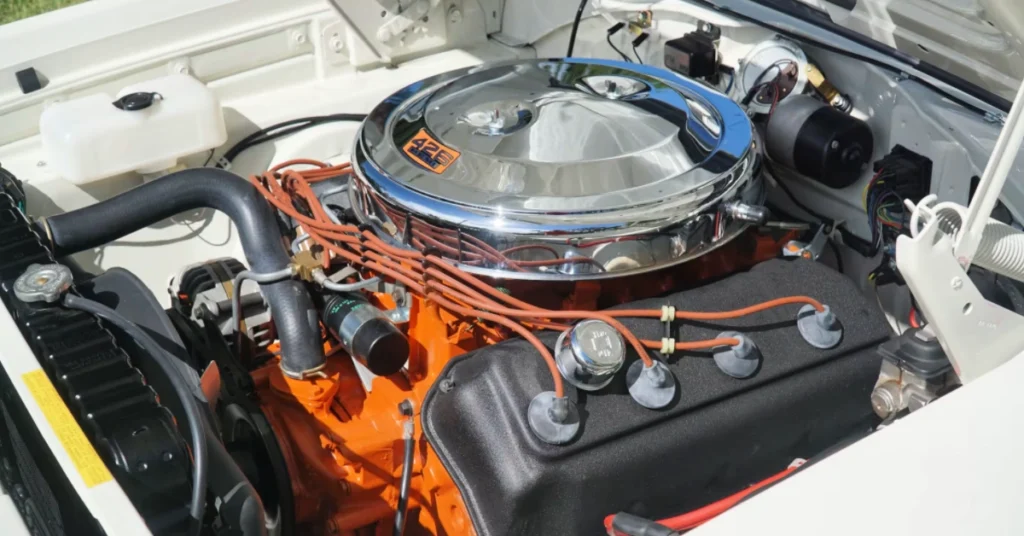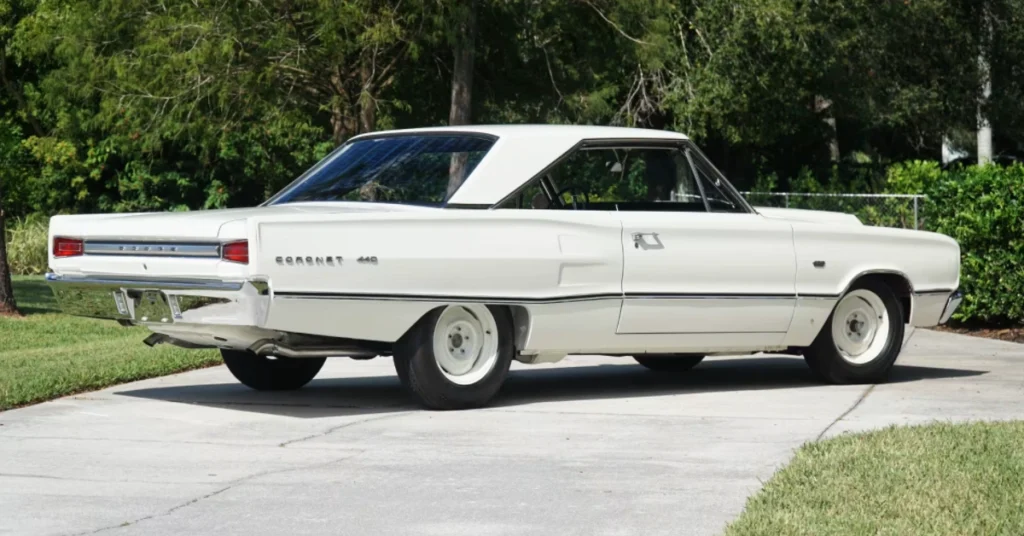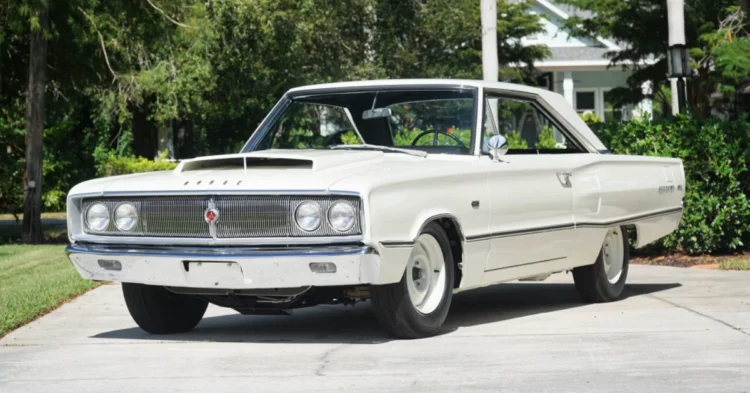In the golden age of American muscle cars, few vehicles command as much reverence as the 1967 Dodge HEMI Coronet WO23. This ultra-rare, factory-built drag racer, powered by the legendary 426 HEMI V8, was designed to dominate the NHRA Super Stock class and remains a pinnacle of Mopar performance. With only 55 units produced, and just 16 equipped with a four-speed manual transmission, this Coronet WO23 is a collector’s dream, set to cross the auction block at Mecum Indy 2025 on May 16, 2025, with an estimated value of $115,000 to $135,000. This article explores the history, design, performance, and enduring legacy of this iconic muscle car, highlighting why it continues to captivate enthusiasts worldwide.
Table of Contents
The 1967 Dodge HEMI Coronet WO23: A Drag Strip Legend
Born for the Strip
The Dodge Coronet, reintroduced in 1965 as an intermediate-sized B-body model, became a cornerstone of Mopar’s muscle car lineup. By 1967, it had evolved into a formidable platform, spawning performance icons like the Dodge Charger and Coronet R/T. The WO23, however, was a special breed—a lightweight, race-prepped Super Stock variant built specifically for NHRA drag racing. Created in response to the NHRA’s new Super Stock class, the WO23 was engineered to compete against Chrysler’s own A990-powered race cars from 1965, offering a more streetable yet brutally effective package.
The WO23 was one of only 55 Coronets built for this purpose, all produced on a single weekend shift on February 12, 1967. Designed with minimal frills and maximum performance, these cars were stripped of non-essential features to reduce weight and enhance speed, making them a rare and coveted piece of Mopar history.
A Collector’s Holy Grail
The 1967 Dodge HEMI Coronet WO23’s exclusivity and racing pedigree make it one of the most desirable muscle cars today. Its rarity, combined with its historical significance, has driven its value to six-figure sums, with this particular example expected to fetch between $115,000 and $135,000 at Mecum Indy 2025. Authenticated by a Dave Wise report and accompanied by its original broadcast sheet, this Coronet is a testament to Mopar’s dominance in the muscle car era.
Dolly Parton’s 1967 Cadillac Eldorado: The Vintage American Icon That Outshines Modern Supercars
The 1970 Pontiac GTO Judge Ram Air IV: The Rarest and Most Exclusive Muscle Car of the 1970s
The 1970 Chevrolet Chevelle SS 454: The Untamed Muscle Car Legend That Defined an Era of Raw Power
Design and Features of the 1967 Dodge HEMI Coronet WO23
Purpose-Built Aesthetics
The 1967 Dodge HEMI Coronet WO23 was designed with one goal: to win at the drag strip. Finished exclusively in white, its exterior was devoid of unnecessary adornments, featuring factory body panels with confidential body stamps for authenticity. The car’s muscular lines and aggressive stance were accentuated by a functional hood scoop, painted steel wheels, and Goodyear bias-ply tires, emphasizing its no-nonsense approach to performance. The absence of chrome trim, sound insulation, and body sealer further reduced weight, making it a lean, mean racing machine.
The interior was equally spartan, featuring a black vinyl bench seat and a minimalist dashboard. The WO23 was built with a mandatory radio and heater delete, along with no spare tire, jack, or windshield wipers, underscoring its focus on drag racing. This utilitarian design created a driver-focused environment, connecting the driver directly to the car’s raw power.
Lightweight Engineering
The WO23’s lightweight construction was a key factor in its performance. Built without sound deadening or undercoating, it shed pounds wherever possible. The trunk-mounted battery and Pursuit Police package suspension enhanced weight distribution and handling, while the absence of creature comforts kept the focus on speed. These modifications, combined with the car’s factory sheet metal, ensured it remained true to its original purpose while retaining its authenticity for collectors.

Performance and Engineering
The Legendary 426 HEMI V8
At the heart of the 1967 Dodge HEMI Coronet WO23 lies the iconic 426-cubic-inch (7.0-liter) HEMI V8 engine, rated at 425 horsepower. Equipped with dual four-barrel Carter AFB carburetors and hemispherical cylinder heads, this engine was a marvel of engineering, delivering blistering acceleration and unmatched power. The WO23’s period-correct 426 HEMI, paired with a rare A833 four-speed manual transmission (one of only 16 produced), provided a visceral driving experience, capable of propelling the car through the quarter-mile in the low 13-second range.
The car’s performance was further enhanced by a Dana 60 rear end with a 4.80 Sure Grip differential, optimized for drag racing. Hooker headers and a dual exhaust system amplified the HEMI’s signature roar, making the WO23 a dominant force on the strip.
Handling and Track Performance
While the WO23 was built for straight-line speed, its Pursuit Police package suspension and front sway bar delete provided sufficient stability for drag racing. The car’s lightweight construction and high-torque engine made it a formidable competitor in the NHRA’s A/Stock category, where it was raced by legends like Butch Leal. Its raw, unfiltered performance and precise four-speed manual shifting offered drivers an exhilarating connection to the machine, a hallmark of Mopar’s drag racing heritage.

Cultural Impact and Legacy
A Mopar Muscle Icon
The 1967 Dodge HEMI Coronet WO23 is a cornerstone of Mopar’s performance legacy, representing the pinnacle of the muscle car era. Its limited production and racing pedigree have made it a symbol of American automotive prowess, celebrated by enthusiasts and collectors alike. The car’s appearances in drag racing history, including campaigns by notable drivers like Butch Leal, have cemented its status as a legend, while its rarity continues to drive demand at auctions.
The WO23’s influence extends to modern Mopar vehicles, such as the Dodge Challenger SRT Hellcat, which draws inspiration from the raw power and bold aesthetics of its predecessors. Its legacy as a factory-built drag racer continues to inspire car builders and racers, keeping the spirit of the muscle car era alive.
Collectibility and Value
The 1967 Dodge HEMI Coronet WO23 is one of the rarest and most valuable muscle cars in existence. With only 55 units produced, and just 16 featuring the four-speed manual transmission, it is a holy grail for collectors. Recent auctions have seen similar WO23s sell for $125,000, with this example’s four-speed configuration potentially pushing it to become the most expensive 1967 Coronet ever auctioned. Its pristine restoration, original broadcast sheet, and Dave Wise authentication enhance its value, making it a centerpiece for any serious Mopar collection.
The WO23’s Enduring Appeal
A Testament to Raw Power
The 1967 Dodge HEMI Coronet WO23 remains a symbol of uncompromised performance, embodying the spirit of the muscle car era. Its rarity, combined with its racing heritage and connection to Mopar’s drag racing dominance, makes it a standout among classic cars. For enthusiasts, it represents a time when power and simplicity ruled the road, offering a driving experience that modern supercars struggle to replicate.
Lessons for Modern Automakers
The WO23’s success highlights the value of purpose-built engineering and bold design. As automakers embrace electric and autonomous technologies, the 1967 Coronet WO23 reminds us of the emotional connection that raw, mechanical performance can inspire. Its legacy encourages manufacturers to balance innovation with the visceral thrill of driving, ensuring that future vehicles capture the heart of enthusiasts.

Conclusion
The 1967 Dodge HEMI Coronet WO23 is more than a car—it’s a rare masterpiece that defined Mopar’s dominance in the muscle car era. With its ferocious 426 HEMI engine, lightweight construction, and storied racing history, it continues to captivate collectors and enthusiasts as it heads to Mecum Indy 2025. Whether roaring down the drag strip or commanding attention at auction, the WO23 is a testament to the untamed spirit of American muscle, proving that some legends are built to roar forever.

